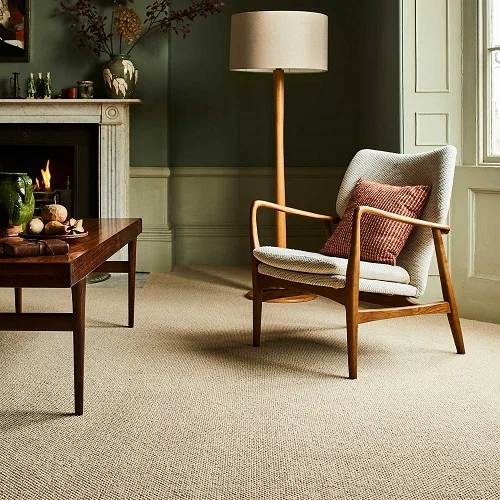
The Art of Dubai Carpets: A History of Luxury Underfoot
When one thinks of Dubai, they often conjure images of towering skyscrapers, extravagant shopping malls, and opulent lifestyle. However, amid the modernity and grandeur of this desert oasis, there lies an art form that has deep roots and is an epitome of luxury – Dubai carpets. These exquisite floor coverings are not just utilitarian, they are artistic creations that tell a tale of tradition, culture, and sheer opulence. In this article, we will unravel the history of Dubai carpets, their intricate craftsmanship, and the cultural significance that makes them a symbol of luxury underfoot.
A Tradition Woven in History: The Origins of Dubai Carpets
Dubai’s association with carpet weaving dates back centuries. The craft of carpet making was brought to the region by Persian and Iranian immigrants, and it soon found fertile ground to flourish in this rich cultural tapestry. The early weavers, with their skills passed down through generations, began creating exquisite masterpieces that would soon be sought after by collectors and connoisseurs worldwide.
One of the distinctive features of Dubai carpets is their intricate designs, often inspired by nature and the surrounding landscapes. From palm trees to desert dunes, these carpets reflect the environment in which they are created. Additionally, motifs like geometric patterns, floral designs, and intricate arabesques are often seen, showcasing the influence of Islamic art and architecture.
Craftsmanship Beyond Compare: The Making of Dubai Carpets
The making of Dubai carpets is a labor-intensive process that requires skill, precision, and a deep understanding of the craft. Weavers, often working in small family-owned workshops, dedicate themselves to creating these unique masterpieces. The process typically involves the following steps:
- Material Selection: Dubai carpets are traditionally crafted from natural materials such as wool and silk. The choice of material depends on the desired quality and appearance of the final product.
- Dyeing: Once the material is selected, it is dyed using natural dyes to achieve the desired color palette. This process requires great expertise as the weavers must ensure color consistency and depth.
- Design and Pattern Creation: Weaving a Dubai carpet involves creating intricate designs and patterns. This is often done by a skilled designer who charts out the pattern on a graph paper, which serves as a guide for the weaver.
- Weaving: The weaving process is meticulous and can take months or even years to complete, depending on the size and complexity of the carpet. Weavers use traditional hand looms and carefully follow the pattern, knot by knot.
- Finishing and Trimming: Once the weaving is complete, the carpet undergoes a finishing process that includes trimming the pile and ensuring all the details are in place. This step requires great attention to detail to achieve a flawless end product.
Cultural Significance: More Than Just a Floor Covering
Dubai carpets are not just pieces of art for the floor; they hold immense cultural significance. They are woven with stories, traditions, and symbolism. These carpets are often used in various cultural and religious ceremonies, symbolizing warmth, hospitality, and the rich history of the region.
In the context of Islamic culture, Dubai carpets play a pivotal role. They are used in mosques and prayer rooms, where their intricate designs create a sacred and serene atmosphere. The carpets’ geometric patterns often symbolize the complexity and beauty of the universe, serving as a connection to a higher power during prayer.
Moreover, Dubai carpets have become a symbol of hospitality. In many homes, it is customary to offer guests a place to sit on these beautifully woven rugs. The act of sitting on a Dubai carpet is a sign of respect and friendship, emphasizing the importance of shared moments and conversations.
A Global Luxury: Dubai Carpets in the Modern World
The allure of Dubai carpets has not remained confined to the Middle East. These exquisite creations have found their way into homes, hotels, and museums across the globe. Dubai carpets are sought after by collectors and interior designers, and they often grace the floors of luxury homes and prestigious institutions.
In recent years, Dubai has become a hub for the carpet trade, with an array of showrooms and dealers offering an extensive selection of carpets, from antique pieces to contemporary designs. Tourists and collectors flock to Dubai’s carpet souks to explore and purchase these luxurious pieces of art.
Preserving a Legacy: The Future of Dubai Carpets
As Dubai continues to evolve and modernize, the tradition of carpet weaving faces challenges. The demand for handmade carpets is often overshadowed by mass-produced alternatives. However, there is a concerted effort to preserve and promote this cultural heritage.
Various initiatives and organizations are working to support the weavers and encourage the younger generation to learn and carry forward the art of Dubai carpet making. These efforts not only preserve a cherished cultural legacy but also ensure that the world continues to enjoy the luxury and artistry of Dubai carpets for generations to come.


